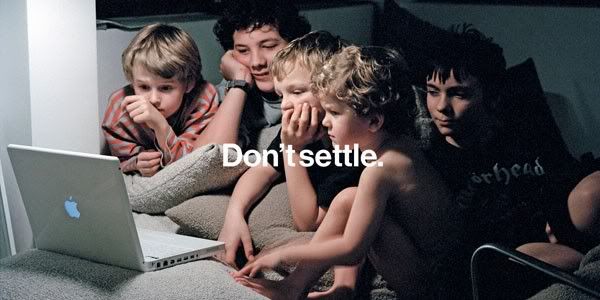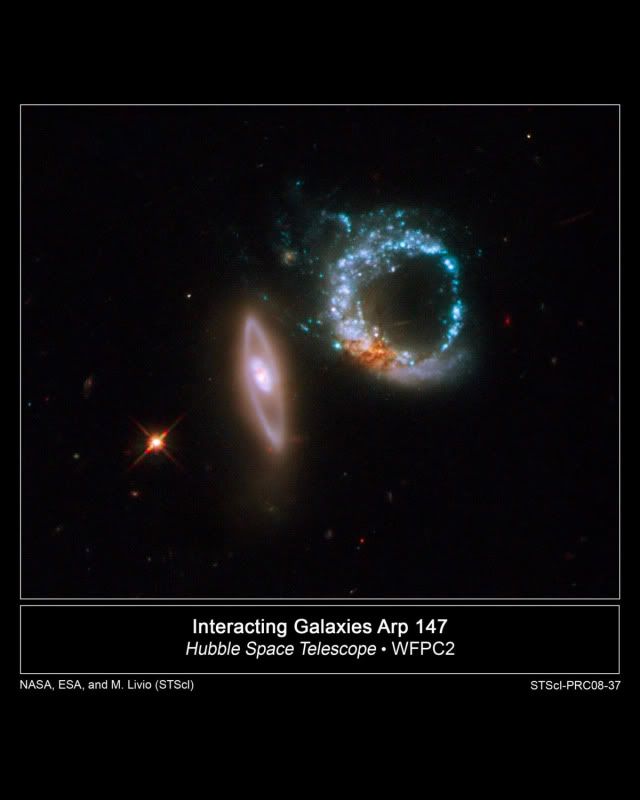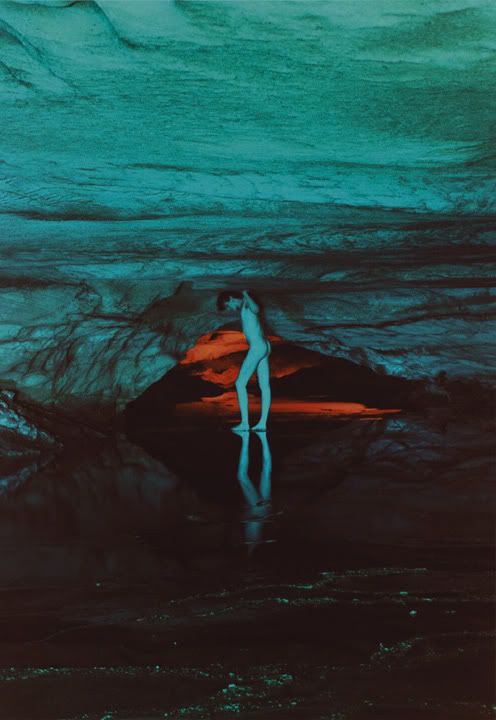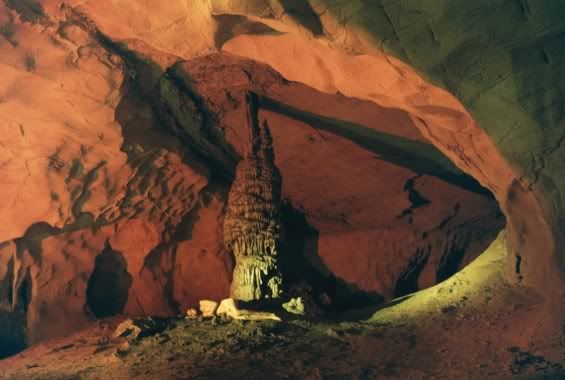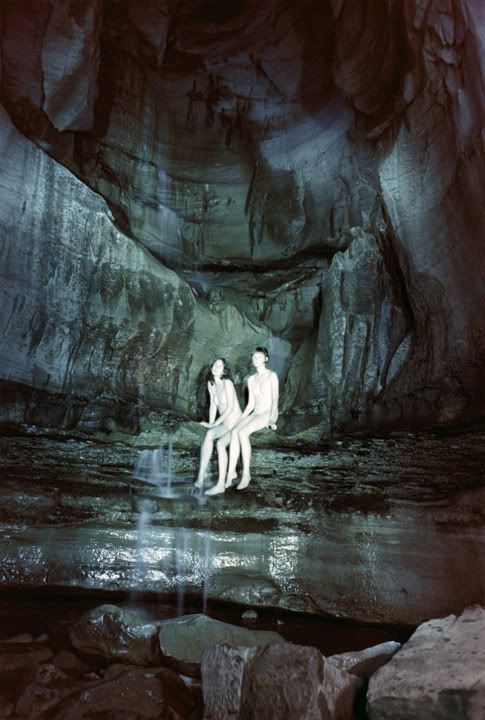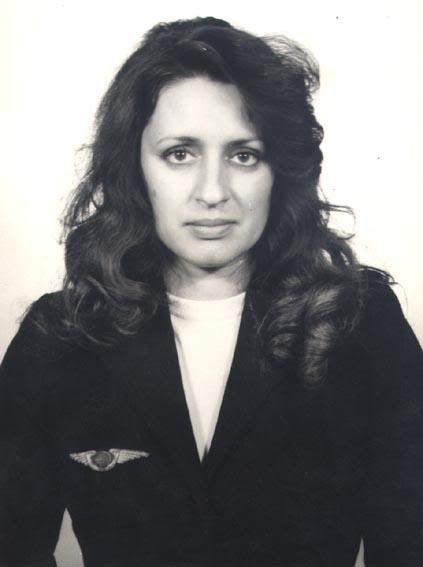Wednesday, October 12, 2011
Tuesday, October 4, 2011
What is good advice for teenagers today who want to make and direct movies?
My answer on :
In 2004 I had been given the opportunity to cast the leading child actress in ‘The Fall’ , a film by Tarsem Singh and presented by David Fincher and Spike Jonze. The story of the film is closely connected with the history of the motion picture and the beginnings of Hollywood.
I spent a long period of time studying and researching how films were produced at the beginning of the 20th century to have a better understanding whilst auditioning hundreds of children for the role. After a while I realised, in that moment in 2004, it was not a journey into the history of cinema or the tireless weeks spent audition children, but it was my first journey into the future of film. How can you better predict the future of film than asking the people that are going to live and shape it?
The idea of discovering raw and pure talent and helping them break into the film industry made me think; how do I multiply the success of one and all the young people breaking through?
In 2004 everything seemed to be impossible, but in 2005 the first YouTube video was uploaded and Facebook had just been launched, evolving from its early beginnings in a Harvard dorm room. In the next year ‘The Fall’ was released and I began the biggest adventure of my life. A journey of building a system that every teenager and young person could create his or her own movies and discover their talent through the process of filmmaking.
As with the case of human communication, using Facebook and Twitter, people can connect so easily with other people. We need this same algorithm for filmmaking. Where filmmakers and those who are interested in film can easily connect with one another and produce pieces of work that are far beyond anything they can dream of, through this collaboration.
My project is now is at the end of its development stage after 5 years in the making. In this time I was interviewing, working and experimenting with over 10,000 children and teenagers; asking them all what they thought about the future of film and where they believed it would take them. We taught ourselves through writing scripts, discovering ideas and experimenting with how to tell these stories. During this process I realised the future of film will not be only a way to entertain but it will be a new way of communication, a new way of collaboration and a new model of production. So my advice to teenagers in breaking into Hollywood starts with self-discovery and self-learning. The film you want to make is within you, you need to know your story and to learn the language of film to understand fully the movie you want to make.
I spent a long period of time studying and researching how films were produced at the beginning of the 20th century to have a better understanding whilst auditioning hundreds of children for the role. After a while I realised, in that moment in 2004, it was not a journey into the history of cinema or the tireless weeks spent audition children, but it was my first journey into the future of film. How can you better predict the future of film than asking the people that are going to live and shape it?
The idea of discovering raw and pure talent and helping them break into the film industry made me think; how do I multiply the success of one and all the young people breaking through?
In 2004 everything seemed to be impossible, but in 2005 the first YouTube video was uploaded and Facebook had just been launched, evolving from its early beginnings in a Harvard dorm room. In the next year ‘The Fall’ was released and I began the biggest adventure of my life. A journey of building a system that every teenager and young person could create his or her own movies and discover their talent through the process of filmmaking.
As with the case of human communication, using Facebook and Twitter, people can connect so easily with other people. We need this same algorithm for filmmaking. Where filmmakers and those who are interested in film can easily connect with one another and produce pieces of work that are far beyond anything they can dream of, through this collaboration.
My project is now is at the end of its development stage after 5 years in the making. In this time I was interviewing, working and experimenting with over 10,000 children and teenagers; asking them all what they thought about the future of film and where they believed it would take them. We taught ourselves through writing scripts, discovering ideas and experimenting with how to tell these stories. During this process I realised the future of film will not be only a way to entertain but it will be a new way of communication, a new way of collaboration and a new model of production. So my advice to teenagers in breaking into Hollywood starts with self-discovery and self-learning. The film you want to make is within you, you need to know your story and to learn the language of film to understand fully the movie you want to make.
- Tell a story, this is the essence of cinema. Think about a story that has a profound effect on you, a personal story that’s comes from inside. Because that’s what you can offer, a personal vision of the world. But always remember to believe and love your story.
- Develop technical skills. Learn how to master technology and make the technology work for YOU. There is no excuse for not making a good film, there is so much technology available today and you can get it very cheaply and it’s available to almost everyone, so experiment with it and make it work for you.
- To learn the language of film must be a state of mind. You have an amazing resource that previous generations didn’t have. Wikipedia, YouTube, the Internet in general is a huge library of references to use at your disposal. USE IT. Here are some examples: http://vimeo.com/filmschool http://en.wikibooks.org/wiki/Mov... http://en.wikiversity.org/wiki/F...
- Build a strong aesthetic taste. Visit museums, watch films, study painting. What else are films but moving pictures and moving paintings? My tip is to study all areas of art culture and design. Try to create a beautiful visual movie that is personal to you. The more visual you are the more successful you’ll be. Our culture is almost completely visual so it’s is vital to immerse yourself in visual culture in every way.
- Filmmaking in today has the tendency to focus on the lone artist. We can write the story, film, edit and distribute all individually, yes. But the beauty and power of filmmaking and cinema comes from collaboration, when people from different backgrounds come together and unite to tell a story. Always be in a team; always search to be in the best teams because in this collaboration you can be influenced and become the influencer to many people, always becoming stronger and stronger storytellers.
- Try to find a mentor, if you cant meet them in reality then follow them on social media. Here on Quora, JJ Abrams is contributing to the feed. It’s amazing that people can be in contact with the best directors and filmmakers in the industry so easily, so use this as a tool for research and learning. Its great for both sides too, as a young filmmaker, you could possibly inspire and influence already established Hollywood filmmakers.
- And remember don’t worry if you don’t break into Hollywood. Making films is a way of knowing and discovering yourself. The stories you tell come from a deep part of your subconscious, so it is important to express this. I used to keep journals so probably if I found them today they would make an interesting book. So keep making stories, keep filming them and perfecting your craft; one day they will be the best films of your life.
Join Quora and read more answers from JJ Abrams (Producer - Lost, Super 8, Mission Impossible III), Neal Edelstein ( Producer - Mulholland Drive, The Ring ) and many other filmmakers http://www.quora.com/Breaking-into-Hollywood-1/What-is-good-advice-for-teenagers-today-who-want-to-make-and-direct-movies
Thursday, September 15, 2011
Future of connectivity
" Collective consciousness taps into intuitive, even spiritual connections, among people. While this reaches deep into what Western minds are challenged to explain, increasingly more people are open to other ways of knowing. This openness to collective consciousness may be emerging in a secular society that is searching for meaningful contributions and relationships. "
Board of Governors, Institute for Alternative Futures , 2006

Board of Governors, Institute for Alternative Futures , 2006

Saturday, September 10, 2011
Serendipity
" The idea of serendipity explains the coincidences that scientists like to refer to explain away anything that would ruin theories or ideas they oppose. Serendipity is the convergence of separate things or forces due to some force of attraction such as harmonic resonance or stochastic resonance. It can explain why two or more people can have the same idea or concept even though widely separated from each other and having no other communication between them. It also explains why pieces of a complex picture come together simultaneously or why there is such a thing as self-organization out of chaos.
Coincidence is a catchword that is used to dismiss things that are actually connected and interrelated. Coincidence assumes two separate and random events may or may not occur simultaneously. There is no pattern other than randomness and chaos. Rising world temperatures and increasing carbon dioxide levels due to human activity has actually been called a coincidence. Only recently have scientists taken another look and are starting to see convergence instead of coincidence. Part of the evidence that has convinced them, is the findings of paleoclimatology. The strange piece in all of this is that carbon dioxide has been known for a long time to be a greenhouse gas. Yet, many scientists have staked careers on the idea that rising CO2 levels and rising temperatures in the Earth's atmosphere are unrelated, merely a coincidence that could as easily not have happened. But this relationship is not a serendipitous one. It is a cause and effect relationship that is well understood.
A serendipitous relation is where unrelated events do converge in a single place and time and are not related by cause and effect patterns. Serendipity allows for cross-disciplinary insights and new ways of perceiving and doing things. A good example of this is the discovery of asteroids and comets near the sun using the SOHO satellite. The SOHO spacecraft was designed to observe the sun, but amateur and professional astronomers have seen far more besides solar phenomena. The Hubble telescope too has found new asteroids in abundance. From this, a power spectrum of size distribution has been found that has implications for the solar system and beyond. While observing other phenomena, the telescope revealed asteroids in abundance at the same time. This was no coincidence, but the serendipitous alignment between telescope, target and asteroids.
When looked at as a whole, there is very little that can be called coincidence in the cosmos. Even the alignment of certain stars in the heavens to particular positions and events unfolding on Earth are not a coincidence. The particular inclination of the Earth guarantees that certain events will usually unfold, just as certain star patterns align overhead. The ancient Egyptians, Babylonians, Mesoamericans all built cosmogonies based upon this reality that worked for them, particularly in their survival as societies. They went to enormous effort to build structures aligned to the heavens. In the case of the Egyptians, we can't even duplicate their engineering feats today. This is a cause and effect relationship that is clear when nature and society are seen as interlinked.
Modern civilization appears to be detached from nature. We, who drown out natural occurrences with an artificial replacement, can be more readily convinced that certain relationships are a coincidence. We receive much of our information second and third hand and can be easily led one way or another. Once one experiences nature and its cycles first hand, the explaining away of serendipitous events as mere coincidence, is not as an effective argument as to those who's closest approach to nature is the freeway or the TV set. Serendipitous events then, can be described as those that occur in parallel to each other in time. High tides occur just after the moon passes the local zenith. Summer bounty occurs when the sun is high from the southern horizon in the northern hemisphere. The relationships that are serendipitous ones are endless. That which appears coincidental, is the result more to do with ignorance than with randomness.
Randomness and chaos are aspects of the same phenomena. Revelations in the study of chaos have revealed a complex order that follows the paths of strange attractors. Even random events like fractal Brownian motion and a true drunkards walk have an overall pattern. The strange attractor rules even in these domains, though it is a different type than that which rule weather or orbits. Strange attractors can account for self-organization in the complex cosmos. Strange attractors are born from the serendipitous convergence of an environmental differential and turbulence, which is generated as a result of the multi-bodied cosmic reality. The cosmos is so constructed as to guarantee serendipitous events of all types. We in our ignorance often call certain relationships, coincidence when it is not so. "
Source http://www.intimatecosmos.com/serendipidy.html
Swimming with the seahorses


The stunning images were captured off the coast of Malta by photographer Kurt Arrigo, who couldn't believe his eyes when he first spotted the unusual sight.
Read more: DailyMail
The Blind City - Queen's start up idea in 1905. A pitch letter from Queen Elisabeth of Romania to President Roosevelt
found on http://theesotericcuriosa.blogspot.com/2011/08/blog-post_02.html
ROOSEVELT AND ROYALTIES
Scribner’s Magazine
Vol. LXVII, No. 4
April 1920
pp 408-410
ROOSEVELT AND ROYALTIES
Scribner’s Magazine
Vol. LXVII, No. 4
April 1920
pp 408-410
A letter of unusual interest came to President Roosevelt in 1905 from Queen Elizabeth (Carmen Sylva) of Romania. In that year the United States sent J. W. Riddle as its first Minister to Romania, and the President gave him a personal letter to hand to the Queen, in which he spoke of her literary works and of the pleasure he had experienced in reading certain of them. In reply the Queen wrote the following letter on a typewriter:
SINAIA, Oct. 12th, 1905.
SIR:
I thank you with all my heart for the kind letter you sent me through your most amiable messenger! We are so glad to have an American representative to ourselves at last, and I am sure you will never regret it, as there are so many increasing interests that could not be thoroughly understood by someone who did not know our country at all. I felt a great deal of compunction in venturing to recommend to your notice the once great tragedian Gertrud Giers. I know how very annoying it is to have stage poor artists thrust upon one. But I could not refuse, as she always was a protégée of my mother and a most honest woman whose struggle for life was so much harder on account of her being so honest. I hope she hasn't bored you too much! You know the world and its wonderful snobbishness, only when the Great of the earth seem to pay attention the poor things can rise into notice, else they are left utterly in the cold!
That the Bard of the Dimbovitza gives you such real pleasure is to me a very great satisfaction. You must like the chain of pearls and the murderer and the bereaved husband and the women after miscarriage. All those things are powerful! To me the book seemed a literary event and I felt very proud that such a light should shine from my poor little unnoticed country! We are always wondering where the origins of these songs may be, they must come from the far east, as there is not a word in them that seems to allude to Christianity. They are simply grand and natural and true as only Shakespeare has ever been.
I am told you read German and so I venture to send you a true story I have put into somewhat poetic prose and also a tiny volume of poems I wrote in English, and in which you may like my joyful address to old age! It is true that I don't feel any older than at twenty-five and therefore I am no real judge, but I see that my feelings are about what you say and you may like them, even if my English verse should not be quite perfect!
We have had a hard fight for existence all these last years and are not beyond much care still. It was nearly famine, only we didn't allow it to grow into that, by making unheard of sacrifices to keep our peasants alive! This year is far from good again, but we hope to get on without buying in other countries the Indian corn that wasn't nearly as good as ours! Your Minister will tell you all about our dire struggle and the unheard of difficulties we had to contend with! though thank God he hasn't seen the worst! Many have been the sleepless nights I worked night and day to bring our silk industry on the market, as I saw that when everything failed the mulberry tree gave us enough leaves to keep our silkworms alive! I do so hope we shall be able to do a great deal in that line!
Another burning interest to me is the question of the blind, as the terrible Egyptian disease has made ravages here. It seems there are about fifteen thousand blind people here, mostly strong young men having been soldiers, and a blind typesetter has found a new machine for printing for the blind and my valet de chambre, a very clever man who has been working for the blind for seven years, has taken up the blind man's idea and worked it out through long and patient months! The first machine was ready to start, when a jealous workman destroyed it in order to prevent his patron from earning money. In a few days it will be ready again. We have the patent for five countries also America, and the inventors don't want to earn a penny, but wish to found what I call my blind city with the result of this machine. A blind man will henceforth be able to print five thousand pages a day. It will be a new life for the blind in the whole world! I have orders from everywhere already and I have also begun my blind city with two or three married people, an engineer and a monk and a sculptor and so on. I begin with fathers first, and let the children follow. A school would be utterly useless, it must come out of the city, but it would cost far too much to begin with it. I want to build something on a socialistic basis. If it interests you at all I shall send our plan of organization. I hope it may answer. I am afraid I am asking too much of your patience already and am beginning to make mistakes as I always do when I begin to get the least bit tired. The typewriter is an enormous help to overworked hands, but the noise is still much too fatiguing to the brain. If I write more than three or four hours at a time I make mistakes in every word at last. And I can't dictate.
Once more kind thanks for your most amiable letter!
ELIZABETH.
Friday, August 5, 2011
PLAY AGAIN
Labels:
children 2.0,
nature,
play
Narcissism Is the Fast Food of the Soul
" Children should be protected until their minds are able to cope with complex selling techniques – they should be free to be children not just consumers.
It will be the next generations who will ultimately decide whether to proceed with our hyperconsumptive way of life or embrace a more sustainable standard of living. We must take all necessary steps to prevent their indoctrination and counter the effects of advertising. "
Read more on WHOLE BRAIN CATALOG

Photo by Roderik Henderson, Transvoid: The Mental Desert
Labels:
advertising 2.0,
brain,
children 2.0,
consumerism
Monday, July 18, 2011
Transmedia species. Moonmilk, See you hurry
Transmedia can happen in different dimensions too not only in different media.
Same story with multiple authors. Visions of the primordial times: RYAN MCGINLEY’S MOONMILK and WIM's See You Hurry.
" Each summer, for 4 summers now, 3 months at a time, McGinley and friends have traveled across the United States shooting gorgeously candid photographs of their journeys. This time, the crew find themselves in caves, some of which have never been touched, stepped inside, or documented before. Unlike previous expeditions across America, this one was more rigorous, hazardous, and testing, requiring much more patience due to the nature of the limited lighting conditions inside the caves. Unlike the “snapshot” aesthetic of his previous bodies of work, this set features more sophisticated looking scenes that draw the viewer into a deeper sense of introspection. The landscape is now oftentimes just as dominant a focus as the carefree and wondrous youth. "
arrestedmotion.com 2009
WIM - See You Hurry (2011) , directed by Collider's video genius Daniel Askill, and starring Louise Van De Vorst.
It's a journey into the outer most regions of your mind as a temptress lures you away in to the deep, dark secrets of the forest ever so slowly.
Labels:
Daniel Askill,
interconnected,
moonmilk,
music video,
photography,
RYAN MCGINLEY,
transmedia,
WIM
Sunday, April 17, 2011
MODERN TIMES - Celebrating Yuri Gagarin and Charlie Chaplin
Celebrating a week of space and cinema: on 12 April, 1961, Russian cosmonaut and fighter pilot Yuri Gagarin became the first human in space and on April 16, 1889, Sir Charles Spencer "Charlie" Chaplin was born. Two heroes of our Modern Times.
And here is a glimpse of the future nostalgia.
MODERN TIMES
a short film by Ben Craig, Richard Mountney, Simon Mountney, Tom Mountney, and Robin Mair.
When we look up at the stars, we see how they used to be. Starlight takes years to travel to Earth. We kid ourselves it’s static. Like old movies, the illusion of permanence makes us feel less flyaway. As the world rockets to the future, we need things that seem stuck. Black and white cinema is comforting for this reason. It’s already the same colours as the night sky. Its stars have been around forever. It doesn’t pummel your eyes, or shriek of the world. When you watch a movie that was made before you were born, it’s reassuring because you know so many others have seen it. We’re not the audience of the past, but we’re part of that audience. Ben Craig’s short film, Modern Times, is about the séance of cinema.
It takes place in a movie theatre. Not on Earth, but in space. This theatre is in orbit around the moon. It projects movies onto the moon’s surface. The future, as ever, looks sleek and bright and unhampered by cost. People happily pay to watch Charlie Chaplin’s 1936 movie, Modern Times. They look transported as a silent classic lights the dark side of the moon. Never mind the rest of the universe. These people are true movie-lovers: they barely register their surroundings. It’s all about the screen. Darkness only adds its lustre. They know they can’t marvel properly at home. The timeless pleasure of being a spectator is half what you watch, and half where you watch it. The heavens, here, offer a majestic venue.
The music we hear is an aria; Casta Diva. It’s a prayer to the goddess of the moon. Bello a me ritorna / Del raggio tuo sereno. Return to me beautiful / With your serene ray. Like most arias, it’s about longing. Even if you don’t know what it means, the singer’s voice is full of orphaned hope. In the opera, Norma, Casta Diva is sung when the world has turned against the heroine. She asks for peace, and for a kinder, gentler world. When the chorus sing in harmony, it’s as if everyone around her echoed that need for calm. The music obviously fits with the setting in Modern Times, but it expresses a common wish too, as this space audience slips the surly bonds of Earth, and enters the haven of the spheres.
Death is where other people take over. That’s why watching movies is like being dead. You keep all your feelings intact; but love of movies means being an observer by choice. You let the people on-screen live out the most private moments of their lives: their heartbreaks, their joys… So your heartbreak and your joy can be relived. Life doesn’t teach us anything in the midst of living. We have to watch life, to learn. And even though movies are often an exaggerated, sentimental version of life; if you watch them in the dark, in silence, that space is rich. In Modern Times, the audience are watching Chaplin and not watching Chaplin. The sublime part of the experience is in their faces. Life is in their eyes; the part that thinks: “I am like Charlie Chaplin” and the part thinks: “I will remember the feeling of watching this film… this place… forever” – a swooning consciousness.
The best shot in when the lens of the projector flings out light, and we cut to the pupil of a young woman’s eye, at once shrinking from the light, and sharpening its focus. I was reminded, as I watched this, of a few lines from a poem: Words can never contain / as music does / the unsayable grace / that leaps like light / from mind to mind. This shot feels like an epiphany to me. What it is the young woman thinks of, doesn’t matter. Watching movies gives you room to grasp unknowable truths… and to let go of them. You aren’t really dead. The meaning of life isn’t really revealed to you. But you can feel peace, if you’re agile. Like savouring a kiss, the best part is ephemeral. After that, hazy memory must suffice.
French cinemas used to announce a new Chaplin movie with a sign that read: Il est ici. He is here. That was how famous Charlie Chaplin was; how many people thought they knew him. Only recently, the internet was abuzz with the story of a time-traveller apparently spotted attending the 1928 premiere of Chaplin’s movie The Circus. We’re not the audience of the past, but we’re part of that audience. Modern Times was released in 1936, yet it persists… in ways, and forms Charlie Chaplin could not have dreamed of. Modernity is fickle. A movie only feels “modern” as long as its stars haven’t begun to fade. Whole worlds can disappear, off-screen. The solace for the audience is that the movie will endure.
A review by James Tatham / Movie Waffle
Labels:
10 films,
Ben Craig,
Charlie Chaplin,
Modern Times,
moviewaffle,
SPACE,
Yuri Gagarin
Monday, March 28, 2011
Be a SmartBird
SmartBird is an ultralight but powerful flight model with excellent aerodynamic qualities and extreme agility. With SmartBird, Festo has succeeded in deciphering the flight of birds - one of the oldest dreams of humankind.


This bionic technology-bearer, which is inspired by the herring gull, can start, fly and land autonomously -- with no additional drive mechanism. Its wings not only beat up and down, but also twist at specific angles. This is made possible by an active articulated torsional drive unit, which in combination with a complex control system attains an unprecedented level of efficiency in flight operation. Festo has thus succeeded for the first time in creating an energy-efficient technical adaptation of this model from nature.
Labels:
festo,
flight,
innovation,
nature models,
smartbird,
technology
A true story of heroism
Many thanks to "flyingdoc" Operations Director from Australia for documenting the story of Aurelia Grigore, one of the most inspirational persons in my life. Fortunately she is a member of my family and I had the chance to live her story when I was a kid. After her first accident I knew immediately that I wanna be a flight attendant or a pilot, travel around the world and save people. During communist times in Romania, for a small girl from Transylvania, Aurelia was the Wonderwoman ...
" There are many stories of true heroism amongst cabin crew and I will post some from time to time, but Aurelia Grigore's story stands out as she was the saviour of the passengers of not just one air disaster, but two!
Aurelia (Laura) joined TAROM, the Romanian state airline, in 1975 at the age of 21 and worked as a stewardess there for over 30 years. When she started, selection criteria for the airline required knowledge of geography and at least 2 foreign languages. As Romania was behind the Iron Curtain, candidates were not allowed to have friends or relatives that lived abroad.
On 7 Aug, 1980 a TAROM Tu-154B carrying 152 passengers and 19 crew crash-landed in the Atlantic Ocean about 300 metres short of the intended runway approaching Mauritania. It was 3 am and in total darkness, with the aircraft running aground on a sandbank and breaking in two. Grigore, then 26 and 2 months pregnant, went forward only to find that the front of the plane was missing and the cockpit had submerged! She and the rest of the crew ordered all the passengers into their life jackets but the overwing lifeboat compartment was jammed and they could not release the boats.
One of the pilots who had all escaped from the sinking nose section then climbed aboard - the #2 engine was still running and fearing that it might explode or that the plane might slide backwards into the depths, they ordered everyone into the water. The passengers and crew from the forward section had some lifeboats and they began swimming for shore. Only a short way from shore, Aurelia found herself being pulled back out to sea by the current but she was able to gain safety by climbing back up on the wing of the crippled plane. There, to her astonishment, she found a fellow hostess with a neck injury, unable to move! (The girl had been dragged there from her seat by other passengers earlier but mistaken as dead and abandoned) She stayed with her and comforted her for 3 hours until they were rescued. Eventually, all 19 crew and 151 passengers survived thanks to the professionalism of the crew. The only fatality was a male passenger who suffered a heart attack during the ordeal!
None of this was ever reported by the Communist press. Although severely traumatised, Aurelia knew she had to face her fear or never fly again. She returned to work 2 weeks later!
Only 6 years later in the summer of 1986 she was crewing aboard a TAROM An24RV with a full passenger load of 52 souls when it crashed at Cluj airport. It was a hard landing and the aircraft bounced with the nose gear then collapsing up into the cockpit area which caught on fire. The plane skidded off the runway into a corn field. Quick thinking by Grigore saw her open the forward escape door before the plane had even stopped moving and the 52 passengers were all safely evacuated. Smoke was coming from the cockpit door but it was locked and the cabin crew could not help the pilots. From outside the plane they could see the cockpit engulfed in flames. On of the co-pilots was trying to escape through the windows but his foot was caught and he could not get out. He eventually frred himself and was taken to hospital but died shortly later of terrible burns. The other 2 pilots perished, burned alive in front of the eyes of their colleagues.
Aurelia Grigore retired in 2004 after over 30 years service. Her incredible story remains largely unknown. To this day she believes it was God's will that saw her washed back out to the stranded Tupolev to save her friend. No doubt she was the saviour of many others in those 2 terrible accidents."
Labels:
Aurelia Grigore,
Aviation,
heroism,
Inspiration,
romania
Monday, March 7, 2011
Passion for adventure
“So many people live within unhappy circumstances and yet will not take the initiative to change their situation because they are conditioned to a life of security, conformity, and conservatism, all of which may appear to give one peace of mind, but in reality nothing is more dangerous to the adventurous spirit within a man than a secure future.
The very basic core of a man’s living spirit is his passion for adventure. The joy of life comes from our encounters with new experiences, and hence there is no greater joy than to have an endlessly changing horizon, for each day to have a new and different sun.”
- Christopher McCandless

Reblogged from FIGHT THE FUTURE
The very basic core of a man’s living spirit is his passion for adventure. The joy of life comes from our encounters with new experiences, and hence there is no greater joy than to have an endlessly changing horizon, for each day to have a new and different sun.”
- Christopher McCandless

Reblogged from FIGHT THE FUTURE
Labels:
Christopher McCandles,
Inspiration,
Into the Wild
Wednesday, March 2, 2011
"The industry is dead" --> PRESS PAUSE PLAY
“ THE HUMAN SPIRIT, WHEN IT’S ALLOWED TO BECOME MADE MANIFEST THROUGH ART, INVARIABLY IS GOING TO CREATE GREATNESS. IT ALMOST DOESN’T MATTER WHAT THE MEDIUM IS... WHEN HUMANS MAKE THINGS, THEY TEND TO MAKE INTERESTING THINGS... THE DANGER IS PEOPLE BECOMING COMFORTABLE WITH MEDIOCRITY” MOBY

A trailer introduced me on twitter by @obhi , featuring moby , @ajkeen , @sethgodins , @hankshocklee
PressPausePlay - Trailer
PressPausePlay Sneak Peek #1 - Seth Godin
The digital revolution of the last decade has unleashed creativity and talent of people in an unprecedented way, unleashing unlimited creative opportunites.
But does democratized culture mean better art, film, music and literature or is true talent instead flooded and drowned in the vast digital ocean of mass culture? Is it cultural democracy or mediocrity?
This is the question addressed by PressPausePlay, a documentary film containing interviews with some of the world’s most influential creators of the digital era.
Director: David Dworsky, Victor Köhler
Producer: Einar Bodström, Philip Mathinsen, Adam Svanell
Cast: Moby, Hank Shocklee, Seth Godin, Olafur Arnolds, Robyn, Hot Chip, Lena Dunham, Andrew Keen, Zach Hancock, Keith Harris
Cinematographer: Hannes Isaksson
Editor: David Dworsky, Victor Köhler
Sound: Erik Olsson
Music: Ólafur Arnalds, Ludvig Franzén, Carl Åborg, Feliz Martinz, Joel Hilme
Directors bio:
Victor Köhler (23) and David Dworsky (26) teamed up as a director duo in 2007. With no formal training, their hands-on approach has lead to a variety of successful film projects. PressPausePlay is the their first feature documentary

A trailer introduced me on twitter by @obhi , featuring moby , @ajkeen , @sethgodins , @hankshocklee
PressPausePlay - Trailer
PressPausePlay Sneak Peek #1 - Seth Godin
The digital revolution of the last decade has unleashed creativity and talent of people in an unprecedented way, unleashing unlimited creative opportunites.
But does democratized culture mean better art, film, music and literature or is true talent instead flooded and drowned in the vast digital ocean of mass culture? Is it cultural democracy or mediocrity?
This is the question addressed by PressPausePlay, a documentary film containing interviews with some of the world’s most influential creators of the digital era.
Director: David Dworsky, Victor Köhler
Producer: Einar Bodström, Philip Mathinsen, Adam Svanell
Cast: Moby, Hank Shocklee, Seth Godin, Olafur Arnolds, Robyn, Hot Chip, Lena Dunham, Andrew Keen, Zach Hancock, Keith Harris
Cinematographer: Hannes Isaksson
Editor: David Dworsky, Victor Köhler
Sound: Erik Olsson
Music: Ólafur Arnalds, Ludvig Franzén, Carl Åborg, Feliz Martinz, Joel Hilme
Directors bio:
Victor Köhler (23) and David Dworsky (26) teamed up as a director duo in 2007. With no formal training, their hands-on approach has lead to a variety of successful film projects. PressPausePlay is the their first feature documentary
Labels:
Andrew Keen,
digital culture,
documentary,
Moby
Thursday, February 3, 2011
Express your talent. Keep the channel open.
"There is a vitality, a life-force, an energy, a quickening that is translated through you into action. And because there is only one of you in all of time, this expression is unique. And if you block it, it will never exists through any other medium and be lost. The world will not have it. It is not your business to determine how good it is nor how valuable it is nor how it compares with other's expressions. It is your business to keep it yours clearly and directly, to keep the channel open ...
Above all else , keep the channel open."
Martha Graham

Martha Graham
Above all else , keep the channel open."
Martha Graham

Martha Graham
Labels:
Inspiration,
Martha Graham,
talent
Subscribe to:
Comments (Atom)
